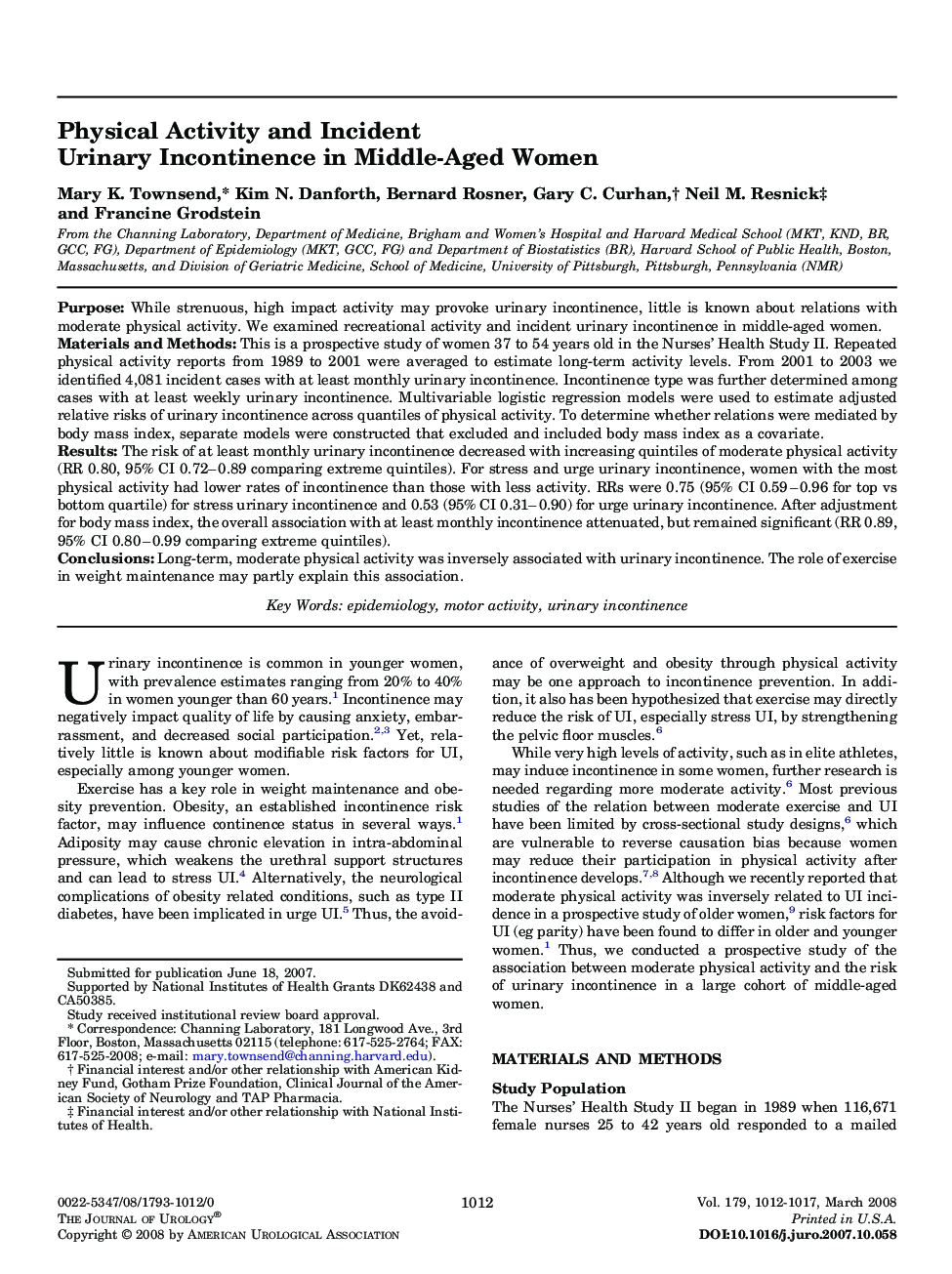| Article ID | Journal | Published Year | Pages | File Type |
|---|---|---|---|---|
| 3873594 | The Journal of Urology | 2008 | 6 Pages |
PurposeWhile strenuous, high impact activity may provoke urinary incontinence, little is known about relations with moderate physical activity. We examined recreational activity and incident urinary incontinence in middle-aged women.Materials and MethodsThis is a prospective study of women 37 to 54 years old in the Nurses’ Health Study II. Repeated physical activity reports from 1989 to 2001 were averaged to estimate long-term activity levels. From 2001 to 2003 we identified 4,081 incident cases with at least monthly urinary incontinence. Incontinence type was further determined among cases with at least weekly urinary incontinence. Multivariable logistic regression models were used to estimate adjusted relative risks of urinary incontinence across quantiles of physical activity. To determine whether relations were mediated by body mass index, separate models were constructed that excluded and included body mass index as a covariate.ResultsThe risk of at least monthly urinary incontinence decreased with increasing quintiles of moderate physical activity (RR 0.80, 95% CI 0.72–0.89 comparing extreme quintiles). For stress and urge urinary incontinence, women with the most physical activity had lower rates of incontinence than those with less activity. RRs were 0.75 (95% CI 0.59–0.96 for top vs bottom quartile) for stress urinary incontinence and 0.53 (95% CI 0.31–0.90) for urge urinary incontinence. After adjustment for body mass index, the overall association with at least monthly incontinence attenuated, but remained significant (RR 0.89, 95% CI 0.80–0.99 comparing extreme quintiles).ConclusionsLong-term, moderate physical activity was inversely associated with urinary incontinence. The role of exercise in weight maintenance may partly explain this association.
